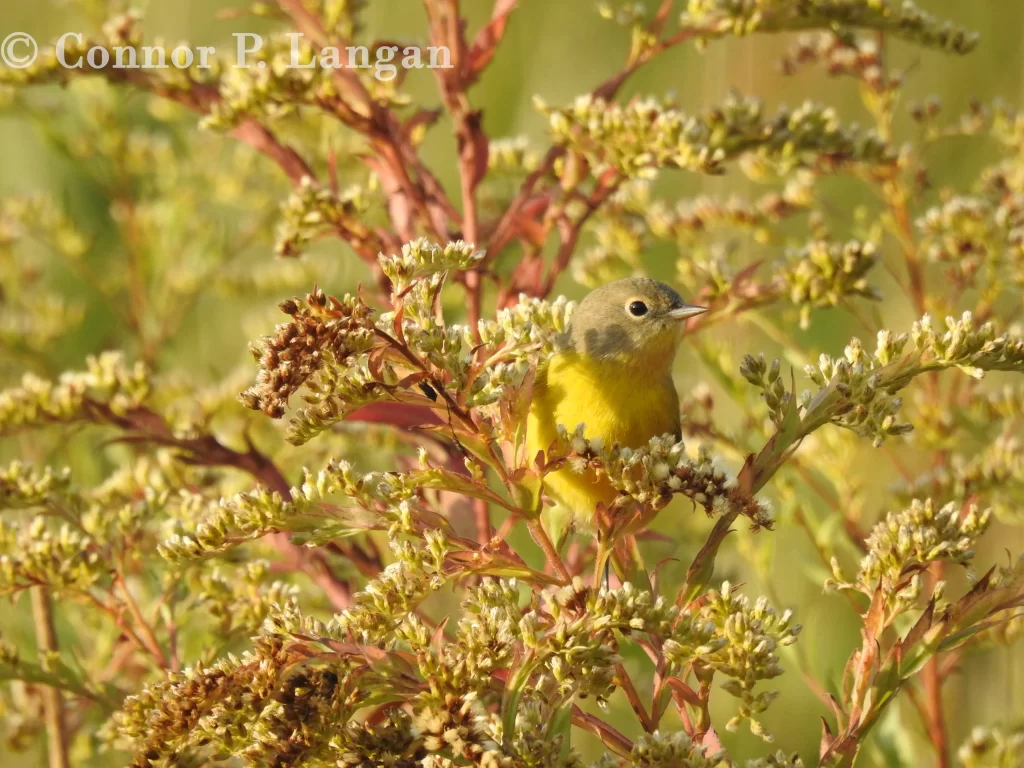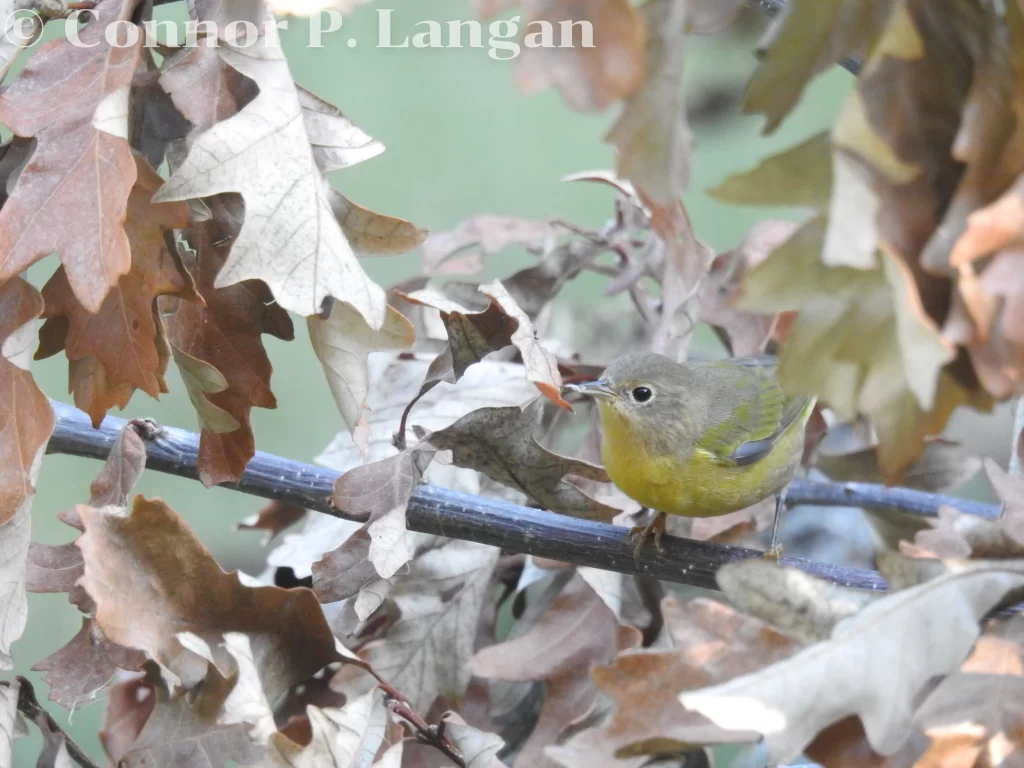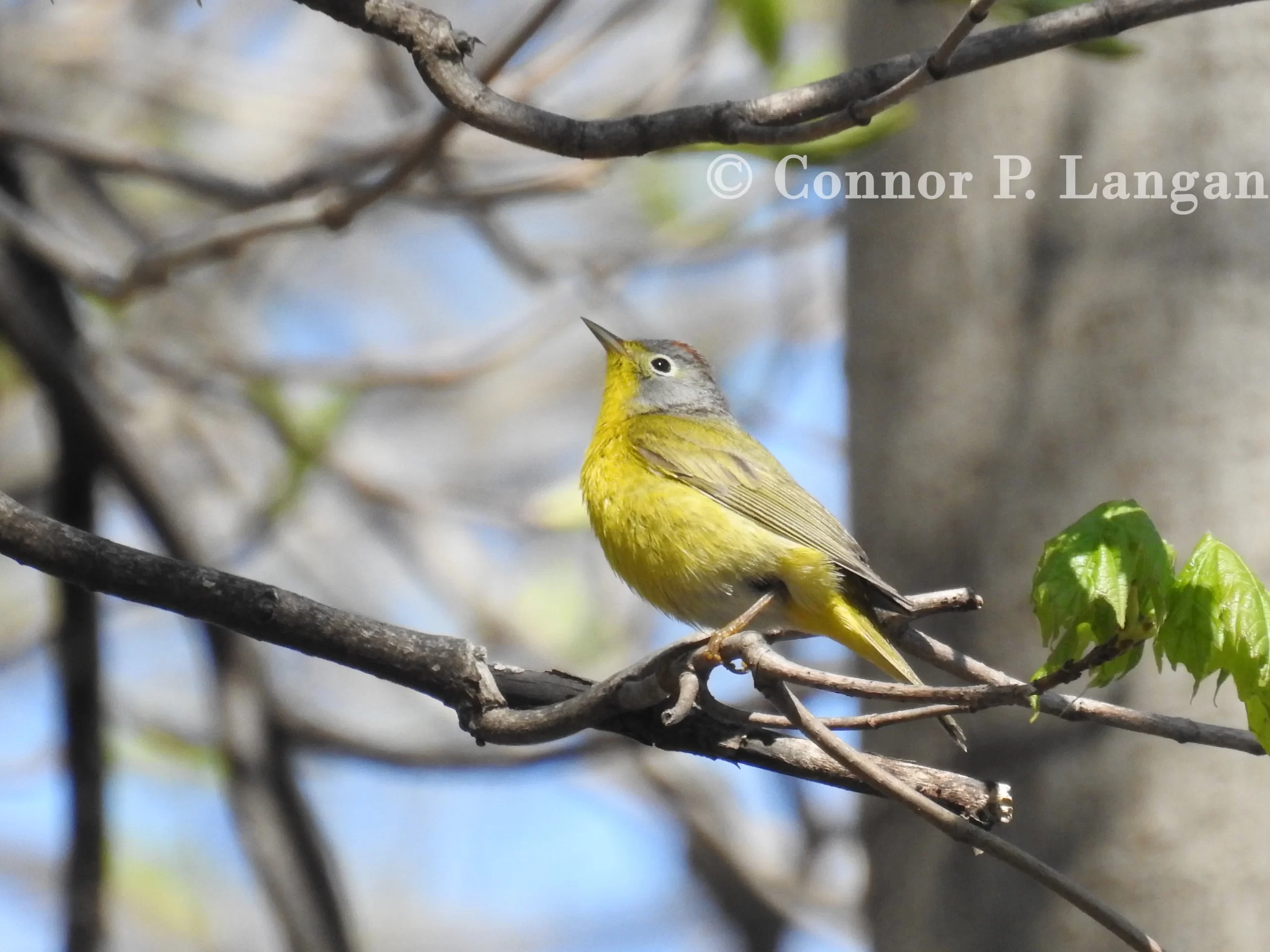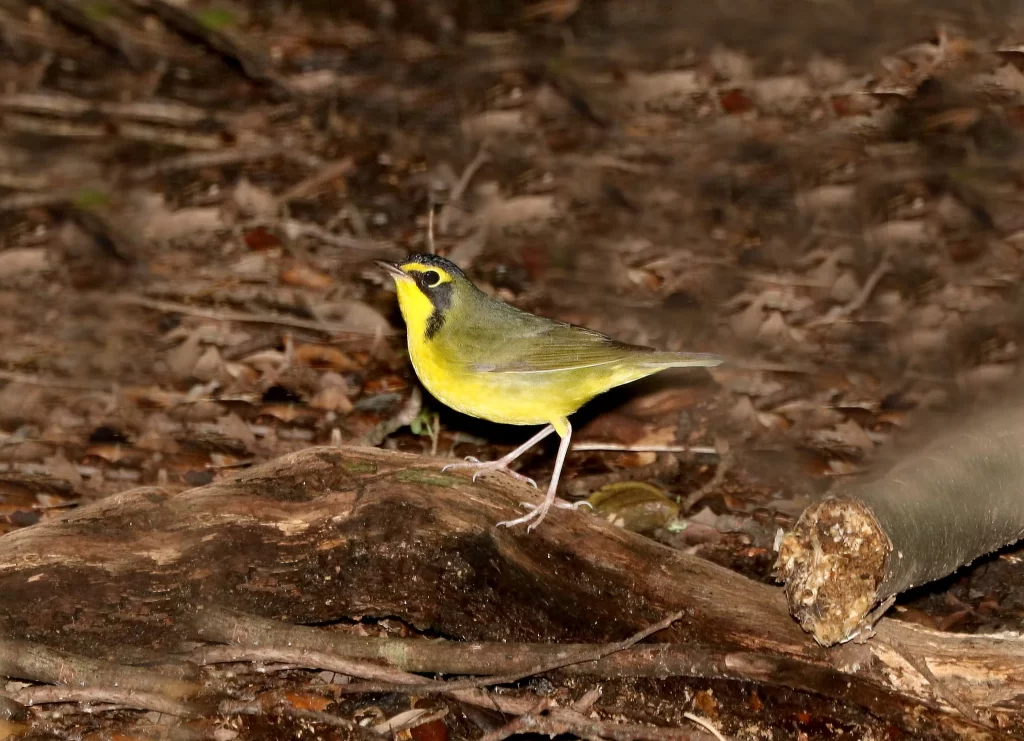Description
- Nashville Warblers are small warblers with white eyerings, short tails, and average-sized beaks.
- Measuring 4.25 to 5 inches, Nashville Warblers weigh anywhere from 0.2 to 0.5 ounces.
- Male Nashville Warblers have gray hoods, yellow throats, chests, stomachs, and undertail coverts, and green or gray backs, wings, and tails. These warblers lack any stripes of wingbars in their plumage.
- Female Nashville Warblers look like slightly less vibrant versions of males.
- Immature Nashville Warblers look similar to females.


Behavior
- Nashville Warblers establish territories during their summer breeding season and defend themselves from intruders, but they become much more sociable during migration and winter, associating with mixed species flocks composed of other passerines.
Diet
- Nashville Warblers consume a variety of insects and invertebrates in the breeding season. During migration and winter, they continue to predominantly eat insects, but they may consume suet.
Habitat
- This species seeks forests that have not yet matured for breeding; forests in which the dominant vegetative community is between 25 to 50 years old are ideal.
- Nashville Warblers can show up anywhere with trees or shrubs during migration-they may even be found foraging in tracts of prairie with little to no trees. In the winter, these warblers survive in deciduous or tropical forests with minimal understory.
Range
- Two distinct Nashville Warbler populations exist. The western population is isolated from the eastern population by hundreds of miles, as they breed in the Northwestern United States. The eastern population breeds in the upper Midwest, the Northeast, and Eastern Canada.
- Birds winter in California, Texas, Mexico, and Central America.
Breeding
- Nashville Warblers are monogamous by nature. Interestingly, there does not seem to be much evidence to suggest that these birds readily seek extra-pair copulations, instead solely copulating with their mate.
- Nashville Warblers typically find new mates each year. Female Nashville Warblers construct the nest-a task that takes at least a week. Females situate their nests on the ground or just slightly elevated above the ground. Nests are placed in thickets or near the base of a bush or tree.
- Nests are cup-shaped and constructed of grass, lichens, and other plant fibers. The interior is lined with soft materials such as feathers, fur, or pine needles.
- Nashville Warblers typically produce a single brood of young each year, with clutches containing around 5 eggs. Eggs are incubated for around 12 days before hatching and leaving the nest around 10 days later.
Backyard Birding
- Nashville Warblers are one of the more common backyard birds in North America considering that they pause their migration to forage and rest in most areas that have trees or shrubs.
- Nashville Warblers may peck at a suet feeder if you have one in your yard, but don’t expect this species to feed on bird feed or nest in a birdhouse on your property.
Population Status
- Nashville Warblers have a total population in excess of 40 million. Numbers of this species have been stable in the last half-century despite facing threats of climate change and habitat degradation.


